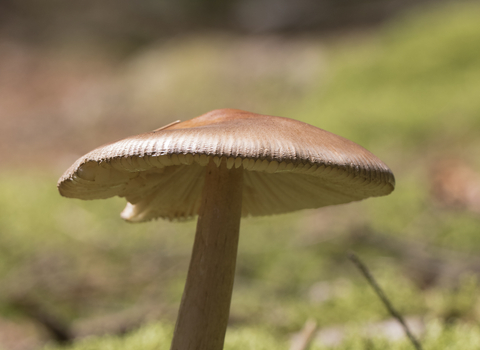
Tawny grisette ©Chris Lawrence
Tawny grisette
The tawny grisette has an orange-brown cap and a tall, slender stem that arises from a conspicuous cup-like sack. It can be found in woodlands, particularly those with Birch, but also on heaths.
Enw gwyddonol
Amanita fulvaPryd i'w gweld
June to NovemberGwybodaeth am rywogaethau
Categori
Ystadegau
Cap diameter: 4-9cmStem height: 7-12cm
Common.
